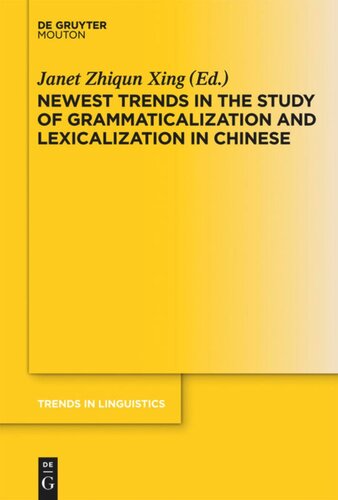

Most ebook files are in PDF format, so you can easily read them using various software such as Foxit Reader or directly on the Google Chrome browser.
Some ebook files are released by publishers in other formats such as .awz, .mobi, .epub, .fb2, etc. You may need to install specific software to read these formats on mobile/PC, such as Calibre.
Please read the tutorial at this link: https://ebookbell.com/faq
We offer FREE conversion to the popular formats you request; however, this may take some time. Therefore, right after payment, please email us, and we will try to provide the service as quickly as possible.
For some exceptional file formats or broken links (if any), please refrain from opening any disputes. Instead, email us first, and we will try to assist within a maximum of 6 hours.
EbookBell Team

4.1
100 reviewsGrammaticalization and lexicalization have been two major issues in the study of diachronic change in the past few decades. Drawing evidence from Western languages, researchers have uncovered a number of characteristics of the process of grammaticalization and lexicalization, as well as the relationship between the two. However, the question remains whether or not those characteristics are applicable to genetically unrelated and typologically different languages, such as Chinese.
The contributors of this volume attempt to answer just this question. Based on Chinese historical data from the past three thousand years, five articles in the volume investigate the development of a certain grammatical category: the definite article (M. Fang), modal verbs of volition (A. Peyraube and M. Li), the classifier class (J.Z. Xing), the repeater class (C. Zhang), and the process of lexicalization (X. Dong), while the remaining four articles are case studies of unique grammatical words which have all undergone a complicated process of grammaticalization and some involved lexicalization: the sentence particle ye (Q. Chen), the versatile directional verb lái (C. Liu), the degree adverb hen (M. Liu and C. Chang), and the giving verb gei (F. Tsao). All these studies have identified tendencies of diachronic change in Chinese and some of them have also revealed certain typological characteristics that Chinese has compared to other languages.